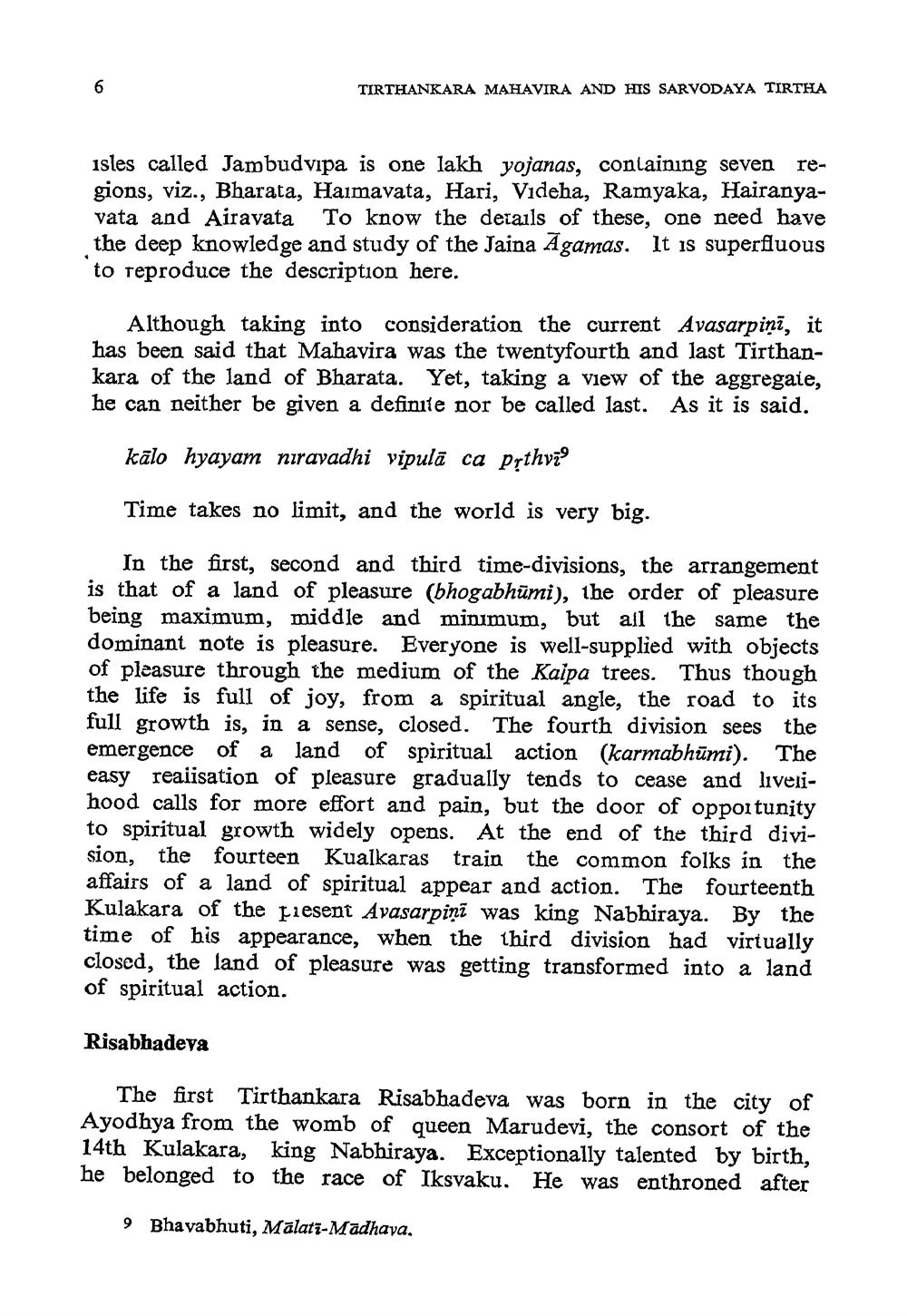________________
6
TIRTHANKARA MAHAVIRA AND HIS SARVODAYA TIRTHA
isles called Jambudvipa is one lakh yojanas, containing seven gions, viz., Bharata, Haimavata, Hari, Videha, Ramyaka, Hairanyavata and Airavata To know the details of these, one need have the deep knowledge and study of the Jaina Agamas. It is superfluous to reproduce the description here.
re
Although taking into consideration the current Avasarpiņī, it has been said that Mahavira was the twentyfourth and last Tirthankara of the land of Bharata. Yet, taking a view of the aggregate, he can neither be given a definite nor be called last. As it is said.
kālo hyayam niravadhi vipula ca prthvi
Time takes no limit, and the world is very big.
In the first, second and third time-divisions, the arrangement is that of a land of pleasure (bhogabhumi), the order of pleasure being maximum, middle and minimum, but all the same the dominant note is pleasure. Everyone is well-supplied with objects of pleasure through the medium of the Kaipa trees. Thus though the life is full of joy, from a spiritual angle, the road to its full growth is, in a sense, closed. The fourth division sees the emergence of a land of spiritual action (karmabhumi). The easy realisation of pleasure gradually tends to cease and livehood calls for more effort and pain, but the door of opportunity to spiritual growth widely opens. At the end of the third division, the fourteen Kualkaras train the common folks in the affairs of a land of spiritual appear and action. The fourteenth Kulakara of the piesent Avasarpini was king Nabhiraya. By the time of his appearance, when the third division had virtually closed, the land of pleasure was getting transformed into a land of spiritual action.
Risabhadeva
The first Tirthankara Risabhadeva was born in the city of Ayodhya from the womb of queen Marudevi, the consort of the 14th Kulakara, king Nabhiraya. Exceptionally talented by birth, he belonged to the race of Iksvaku. He was enthroned after
9 Bhavabhuti, Malati-Madhava.




